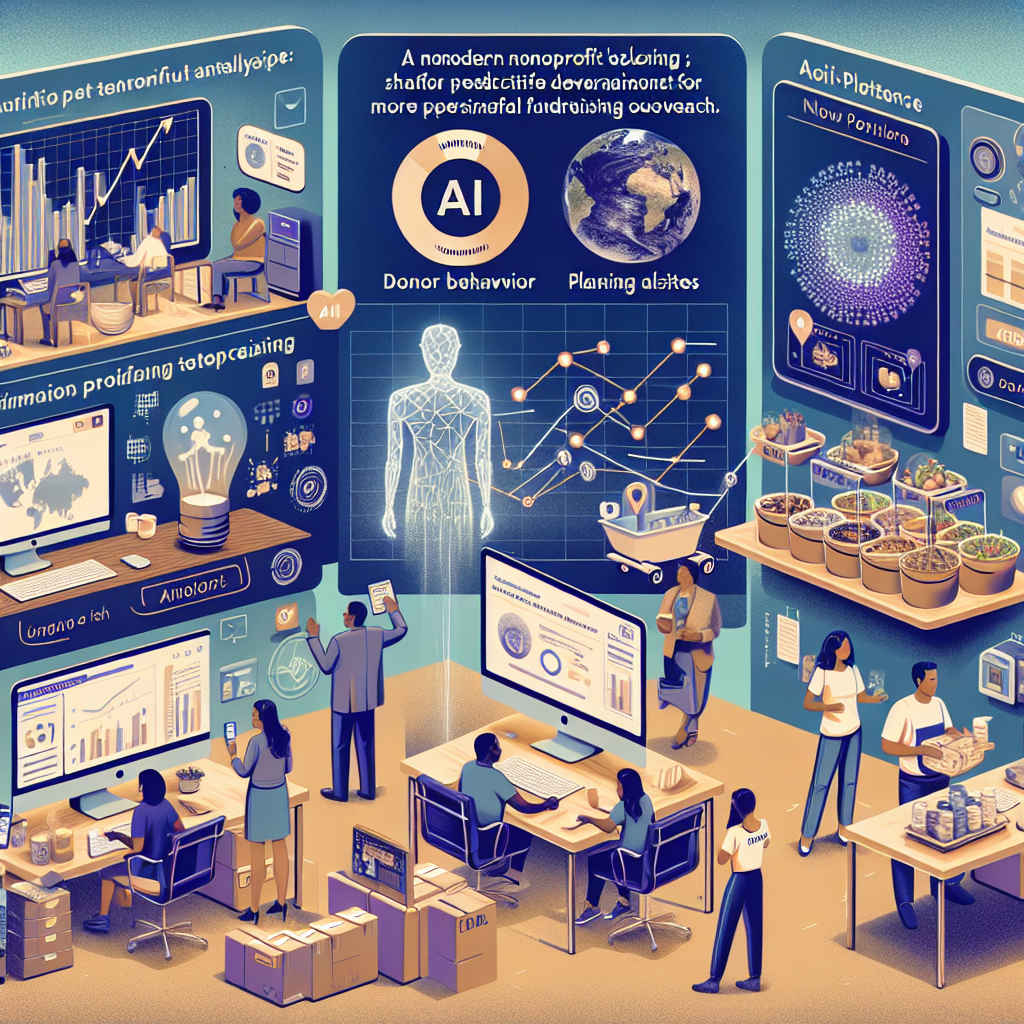In the ever-evolving landscape of nonprofit organizations, staying ahead in technology can significantly enhance their mission impact. Recently, there's been a noteworthy trend of nonprofits leveraging artificial intelligence (AI) to optimize their operations and scale their outreach efforts. This shift is not just about embracing technology for the sake of modernity but is driven by tangible benefits in efficiency and effectiveness.
One of the key areas where AI is making a difference is in donor management and outreach. Nonprofits like the American Red Cross have started using AI-powered data analytics to predict donor behavior, enabling more personalized and timely communication. By analyzing donor data patterns, these organizations can tailor their fundraising efforts to engage more effectively with their supporters, ultimately leading to higher retention rates.
Another impactful application of AI in the nonprofit sector is in program delivery. For instance, World Food Program (WFP) has integrated AI in its logistics and supply chain operations. By predicting food demand and optimizing delivery routes based on real-time data, the organization has managed to reduce operational costs while ensuring that aid reaches those in need more promptly. This optimization not only conserves resources but also amplifies the tangible benefits of every dollar spent.
Chatbots are also becoming increasingly popular among nonprofits for engaging with the community. Health-focused organizations, such as Crisis Text Line, have employed AI-driven chatbots to provide immediate assistance to individuals in distress, making mental health support more accessible without additional human resources. This approach has proven to be a game-changer, particularly during resource-strapped times or elevated demand.
However, incorporating AI isn't without challenges. Smaller nonprofits often struggle with budget constraints and lack of technical expertise. In response, collaborations with tech companies or using AI-as-a-Service (AIaaS) platforms are becoming viable solutions. These partnerships provide nonprofits access to critical technology without upfront investment, allowing them to reap the benefits of AI.
Overall, the trend of nonprofits leveraging AI underscores an exciting convergence of technology and philanthropy. As these organizations navigate the complexities of modern-day challenges, AI stands as a powerful ally in enhancing their reach and efficiency. This evolution echoes a broader narrative of technology as an enabler, driving meaningful change in the nonprofit realm.
Estimated reading time: 1 minute, 54 seconds
Nonprofits Leveraging AI for Greater Impact Featured
 Explore how nonprofits are harnessing AI for more effective donor management, program delivery, and community engagement, despite challenges in adoption.
Explore how nonprofits are harnessing AI for more effective donor management, program delivery, and community engagement, despite challenges in adoption.
Latest from NonProfit Tech News
- The Rise of Digital Literacy in Non-Profits: Bridging the Tech Gap
- Leveraging Cloud Solutions for Enhanced Nonprofit Operations
- Leveraging Cloud Technology for Nonprofits: Maximizing Efficiency and Impact
- Enhancing Nonprofit Efficiency with the Latest Budgeting Tools
- The Rise of Nonprofit Management Software: Enhancing Efficiency and Impact
Most Read
-

-
Feb 16 2009
-
Written by Kurt Martin
-
-

-
Jul 22 2016
-
Written by Jennifer Flaten
-
-

-
Sep 12 2013
-
Written by Jennifer Flaten
-
-

-
Jun 25 2010
-
Written by Bob Alves
-










